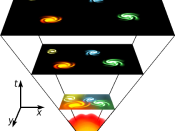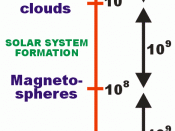The Plasma Theory is a non-standard cosmological model which attempts to explain the large scale structure of the universe using electromagnetic interactions in astrophysical plasmas. The theory was mainly developed by Nobel Prize recipient and plasma physicist Hannes Olof Gösta Alfvén, a plasma physicist and a receiver of the Nobel Prize. Since then the theory has been advanced further by other plasma physicists such as Eric J. Learner and Anthony Peratt.
Hannes Alfvén was an early supporter of "plasma cosmology," a concept that challenges the big-bang model of the origin of the universe. Those who support the theory of plasma cosmology hold that the universe had no beginning and has no foreseeable end. Also, that plasma, with its electric and magnetic forces, has done more to organize matter in the universe into star systems and other large observed structures than has the force of gravity. Much of Alfvén's early research was included in his books: Cosmical Electrodynamics (1950) On the Origin of the Solar System (1954), but it was in 1966 that Hannes Alfvén first proposed an alternative cosmology to both the Steady State and the Big Bang cosmologies.
Alfvén believed the problem with the Big Bang was that astrophysicists tried to estimate the origin of the universe from mathematical theories developed on the blackboard. The Big Bang was a myth according to Alfvén. This myth was devised to explain creation according to Alfvén. He told with close friends that the theory tried to make science compatible with the authoritative declaration of creatio ex nihilo, meaning creation out of nothing.
One of the first and most well developed models of plasma cosmology was put forth in 1965 by Alfvén himself. In his model, the universe exists as a mixture of matter and antimatter which he called ambiplasma. The cellular regions...


